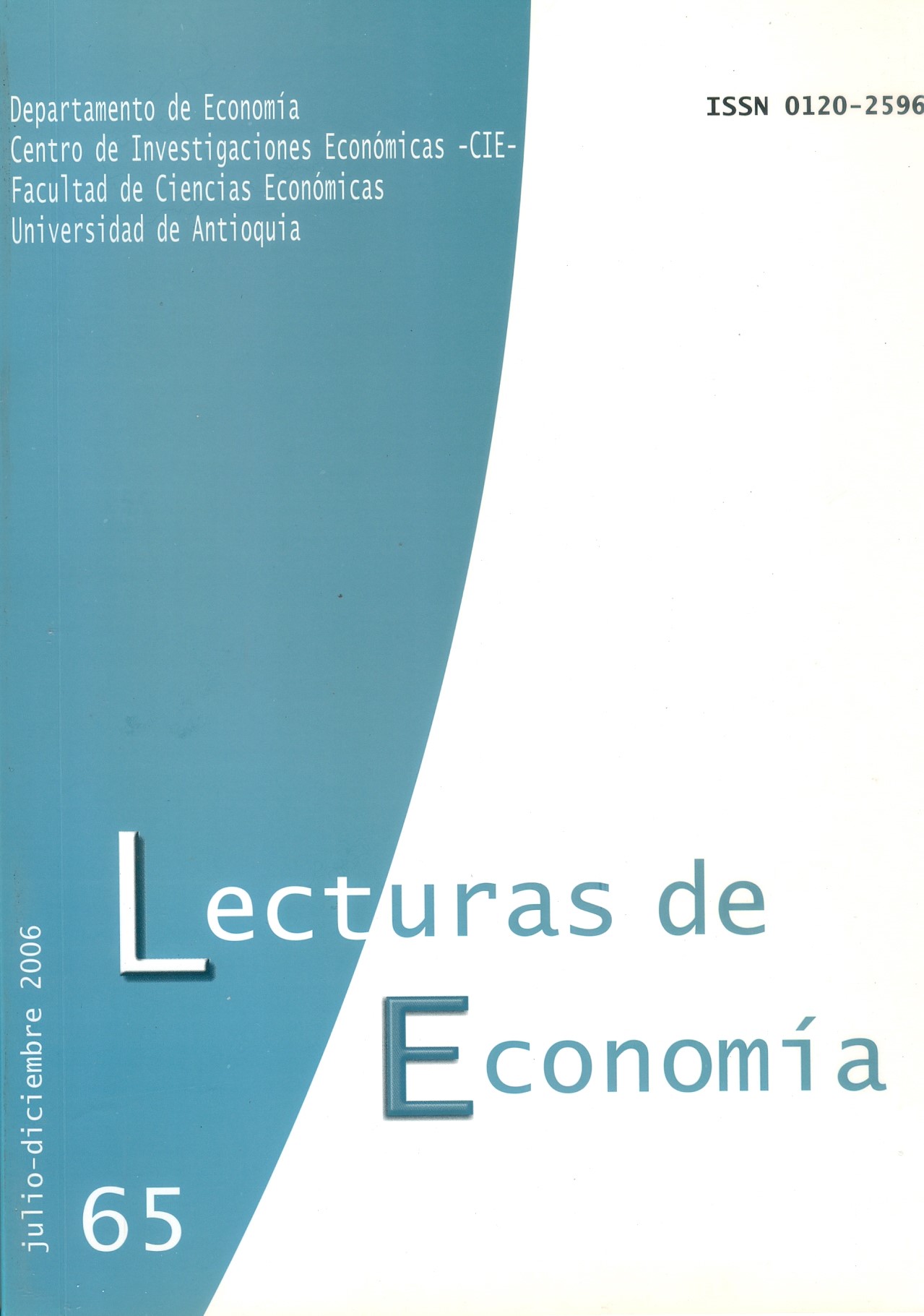Grupos de interés y regulación ambiental en Colombia: el caso de los recursos hídricos
DOI:
https://doi.org/10.17533/udea.le.n65a2643Abstract
Este artículo muestra los efectos que los distintos intereses tienen sobre el desempeño del instrumento económico (tasa retributiva) usado en Colombia para el control de la contaminación en los cuerpos de agua. Para ello se recurre al modelo de subasta de menú desarrollado por Gene Grossman y Elhanan Helpman (1994) y a una combinación de los modelos de grupos de interés de Toke-Skovsgaard-Aidt (1997 y 1998), Per G. Fredrikkson y Noel Gaston (2000) y Gary Becker (1983 y 1985). De la investigación se concluye que siempre que existan diferencias entre las influencias de los diversos intereses se van a obtener niveles de contaminación, que serán los mejores para los grupos más influyentes. Solamente cuando las influencias estén balanceadas los resultados se acercarán a los niveles de contaminación hídrica socialmente eficientes.
Palabras clave: regulación ambiental, grupos de interés, subastas de menú, agencia común, impuesto pigouviano. Clasificación JEL: D78, D86, Q53.
Abstract:
Resorting to the menu auctions model developed by Grossman–Helpman (1994) and combining the interest groups models of Aidt (1997 and 1998), Fredriksson–Gaston (2000) and Becker (1983 and 1985) this article shows the effects that different interests have over the performance of the economic instrument (pollution tax) used in Colombia for the control of pollution in water bodies. Whenever differences exist among the influences of various interests different pollution levels will be obtained; which will be the best for the most influential groups but not so for society as a whole. Only when influences are balanced the resulting pollution levels will approach those socially efficient.
Keywords: environmental regulation, interest groups, menu auctions, common agency, pigouvian tax. JEL classification: D78, D86, Q53.
Résumé :
Cet article montre les effets produits par les différents groups d’intérêts sur la performance du taux de rémunération utilisé en Colombie pour mesurer le contrôle sur la pollution de l’eau. Pour ce faire, nous utilisons, d’une part, le modèle des mécanismes d’enchères développé par Gene Grossman - Elhanan Helpman (1994) et, d’autre part, une combinaison des modèles de groupes d’intérêts de Toke Skovsgaard Aidt (1997, 1998), Per G. Fredrikkson - Noel Gaston (2000) et Gary Becker (1983, 1985). Nous concluons que tant qu’il y a des différences entre les influences des groups d’intérêts, les niveaux de pollution seront les plus élevés pour les groups d’intérêts les plus influents. Ce n’est que lorsque les influences seront balancées que les résultats se rapprochent des niveaux de pollution hydrique socialement efficaces.
Mots clés: régulation environnementale, groups d’intérêts, mécanismes d’enchères, taux pigouvien. Classification JEL: D78, D86, Q53.
Downloads
Published
How to Cite
Issue
Section
License
This page, by Universidad de Antioquia, is licensed under a Creative Commons Attribution License.
Authors who publish with this journal agree to retain copyright and grant the journal right of first publication, with the article licensed under a Creative Commons Attribution-NonCommercial-ShareAlike License allowing others to share it as long as they acknowledge its authorship and original publication in this journal.
Authors can enter into separate, additional contractual arrangements for the non-exclusive distribution of the journal's published version of the work (e.g., post it to an institutional repository or publish it in a book), provided that these arrangements be not for profit and the journal be acknowledged as the original source of publication.
Authors are permitted and encouraged to post their papers online (e.g., in institutional repositories or on their websites), as it can lead to valuable exchanges as well as greater citation of the published work.







